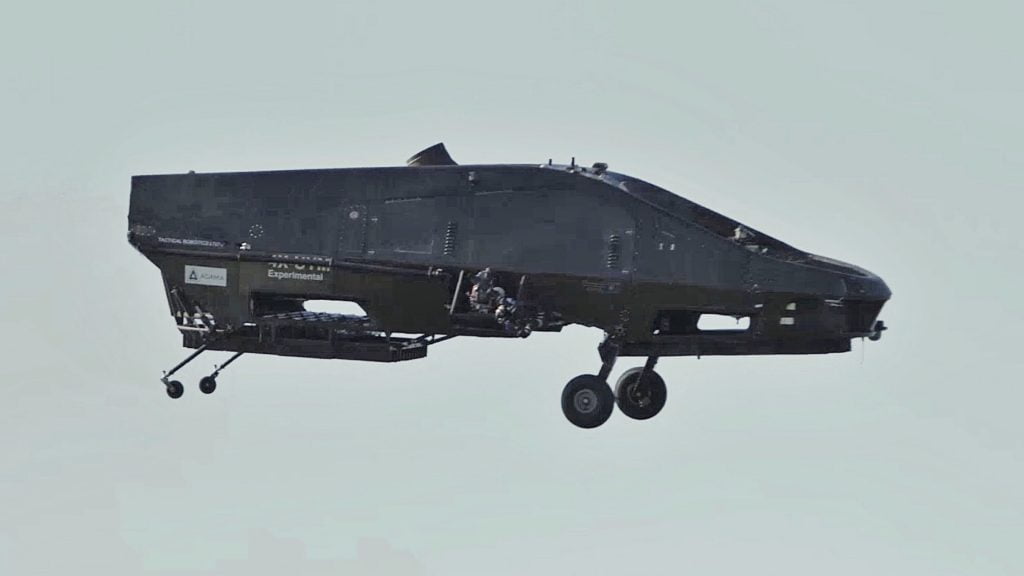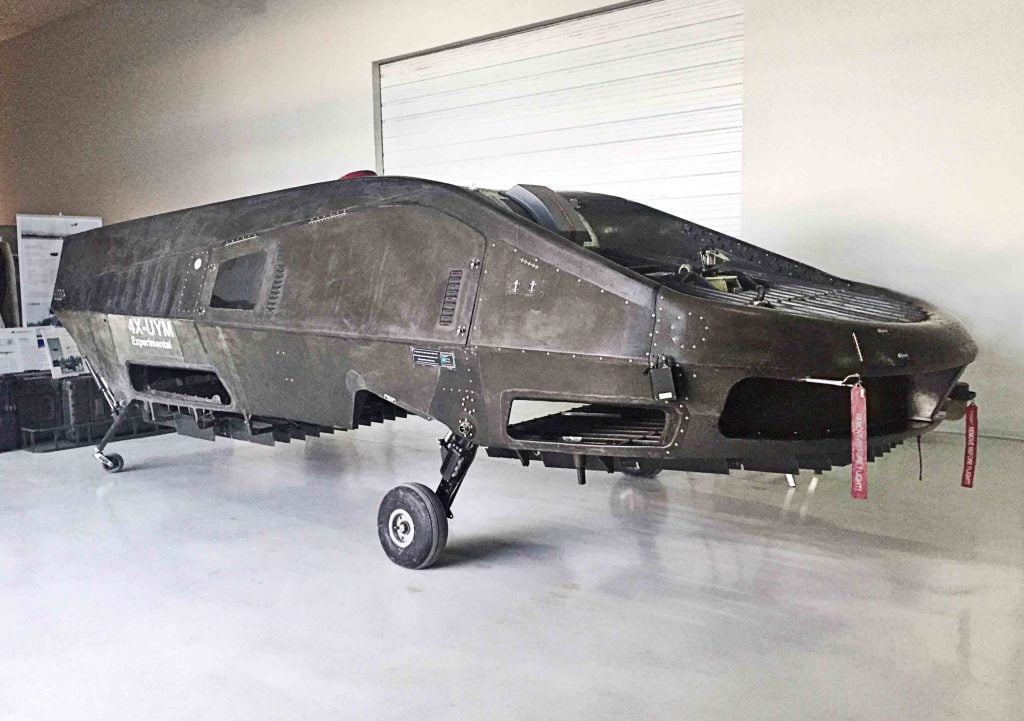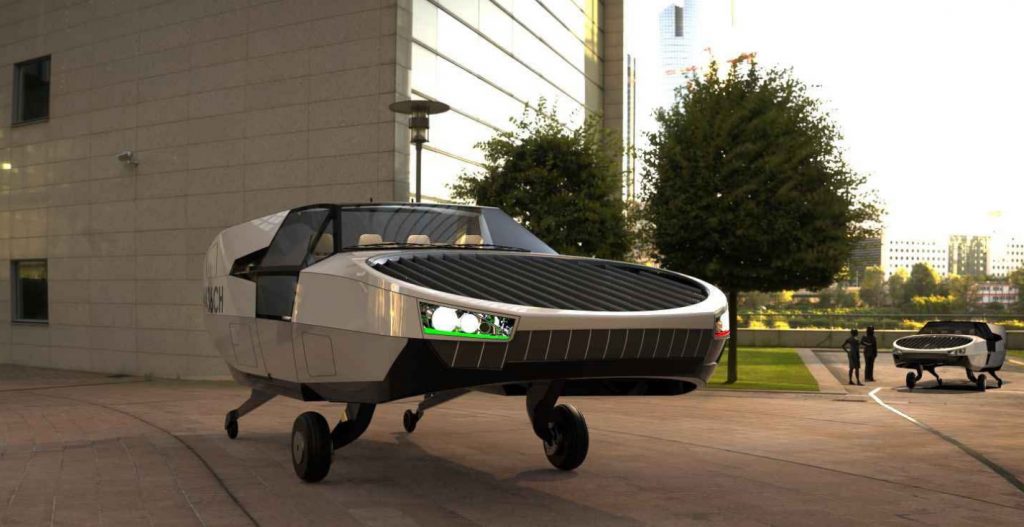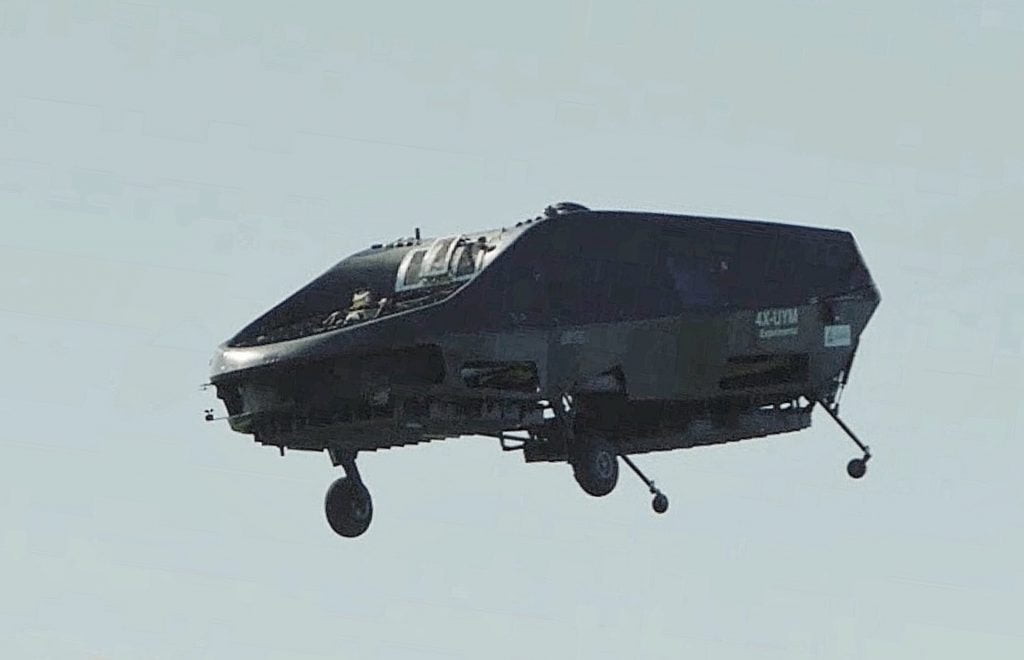American aerospace multinational Boeing announced on Wednesday that it signed an agreement with Israel-based Tactical Robotics, a subsidiary of Urban Aeronautics, to explore the development of a ducted fan propulsion technology with potential uses for piloted and autonomous light aircraft.
Tactical Robotics has been developing a VTOL (vertical takeoff and landing) unmanned airborne vehicle called the Cormorant (formerly AirMule) based on its patented Fancraft technologies which transform basic ducted-fan designs into aircraft.
SEE ALSO: Flying Cars May Have Found Their Launch Pad In Israel
The two companies said they will look at opportunities to develop, produce and market Fancraft-based VTOL products including the Cormorant. The financial details of the agreement were not disclosed.

According to Urban Aeronautics, Fancraft improves stability, payload, speed, and endurance of such aircraft which use a fan mounted in a cylindrical duct to produce thrust to enhance airflow velocity and pressure. There are also safety benefits when compared to unshielded blades on traditional rotorcraft, Boeing and Tactical Robotics explained in a statement.
“Speaking simply, if you want to fly, you have to push air down toward the ground. This is how helicopters fly, for example,” explains Nimrod Golan-Yanay, SVP Business Development at Urban Aeronautics.
“Fancraft uses two big internal fans – helicopters use external rotors – to push the air down through guided vanes, to allow vehicles to lift off,” he tells NoCamels in a phone interview.
The technology – which he says involved a decade of R&D, 39 registered patents, and 4,500 computational runs – allows for “a lift-off that is controllable and efficient, solving the many challenges posed by vertical lifts,” says Golan-Yanay. “It’s never been done before,” he adds.
The Cormorant itself was conceived as a solution for emergency responses to natural disasters or on combat environments, operating inside complex and natural environments where it can be difficult for regular helicopters or other aerial vehicles to maneuver or land. The aircraft can conduct emergency response missions such as delivering food, water, and supplies and can also carry up to four patients for medical evacuations, the company said.
The vehicle can reach speeds of up to 115mph (185 km per hour), an altitude of up to 18,000 feet (about 5.4 km) and can carry as much as 1,100 pounds (almost 500 kg), the company previously told NoCamels.
“Cormorant represents the first in a family of vertical takeoff and landing aircraft that can fly and land where no other aircraft can,” said Dr. Rafi Yoeli, CEO of Urban Aeronautics and a veteran Israeli entrepreneur in the unmanned vehicle industry, in a statement on Wednesday.
“We can think of no better partner than Boeing to help us develop this product and utilize the Fancraft technology to its full potential.”
Dennis D. Swanson, VP of International Sales at Boeing Global Sales and Marketing said that the relationship between Boeing and Israel goes back about 70 years, and during that period Boeing has a long history of working in partnership with Israel’s technical and industrial sectors.”
Sign up for our free weekly newsletter
Subscribe
“This MoU with Tactical Robotics builds on Boeing’s commitment to developing and investing in innovative technologies that lead to safe, reliable aircraft around the world,” he added.
Yoeli told NoCamels in 2018 that the idea for the Cormorant came after the Second Lebanon War in the summer of 2006. It was at this point that the Israel Defense Forces realized they needed a new kind of vehicle to rescue wounded soldiers. “Helicopters could not land near where the person was injured,” Yoeli explained, noting that the terrain sloped in many areas making it extremely difficult for a helicopter to touch ground.
“The helicopter would end up needing to land at least a kilometer (a little more than half a mile) away. It was the same problem in Iraq, Afghanistan — especially in urban areas,” he said at the time.
SEE ALSO: Ride & Fly: US-Israeli Startup To Begin Testing Flying Vehicle In 2020
Another problem was the amount of time it took to transport the wounded. It would also take up to five-and-a-half hours to ferry the wounded from the front lines back to the hospital. The goal was to do it in one hour, Yoeli said, which is what the Cormorant is capable of doing now.
Helicopter rotors also “get in the way of a search and rescue operation and cannot get into obstructed terrains,” Yoeli said, which doesn’t make them ideal for rescuing injured soldiers. The Cormorant, on the other hand, has rotors located inside the aircraft, which are not only safer for landing and for allowing people to stand closer to the aircraft but are also quieter.
Golan-Yanay tells NoCamels the applications are vast and can include city and dense urban environments, as well as rough and difficult terrain (mountainous areas for example), in addition to the defense, homeland security, and emergency response applications.
“If there’s a fire on the 45th floor of a building, for example, it’s going to be very hard to get to. With our solution, we can hover next to the building because we have no external rotors,” he explains.
The aircraft made its first solo flight in November 2016. By 2020, the Cormorant has conducted over 300 flights including three wind tunnel tests, according to Golan-Yanay. There is another scheduled flight in about two weeks.
“The MOU with Boeing is the beginning of a process toward a commercial product. At this point, we have nearly completed proof of feasibility and proof of concept,” he tells NoCamels, adding that Urban Aeronautics and Tactical Robotics also have a number of different partnerships with companies around the world.
Urban Aeronautics has also been working on a manned version of the Cormorant called the CityHawk, developed by subsidiary Metro Skyways for urban transportation and emergency response in cities. The vehicle will be able to hold a maximum of five passengers plus a pilot.

Related posts

Editors’ & Readers’ Choice: 10 Favorite NoCamels Articles

Forward Facing: What Does The Future Hold For Israeli High-Tech?

Impact Innovation: Israeli Startups That Could Shape Our Future




Facebook comments